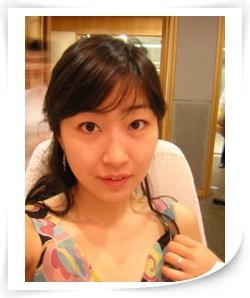2006 Statistical Findings by MOGEF on Women in Korea
1.The number of childcare facilities (including both state-run and private childcare centers) more than tripled to 28,367 in 2005 from ten years ago.
2.Government subsidies for childcare on household totaled at W573.9 bn in 2005, up 64.2 % from W349.5 bn in 2004. The number more than quadrupled from the 2001 figure of W142.5 bn and from 2001 to 2005, the subsidy shows an average yearly increase of 41.7 per cent.
3.In the male-dominated Korea, the general trend has been that a man is registered as the head of the family. Recently, however, there has been an increase of female heads as social standing of women has a lot improved. In 2005, males still accounted for 78.2 % (12,402) of registered household heads while females took up for 21.9 % (3,485). But the number of female household heads has increased from 2000 to 2005 at the rate of 31.4 %, while that of male was 6.4 % during the same period.
4.The rate of economically-active females crossed the 50 % mark in 2005 for the first time since the statistical research by the national statistical office started in 1962. The rate stood at 50.1%, up 0.2% from 49.9% in 2004.
5.10.3% of women aged less than 20 are economically-active in 2005, compared to 20.1% in 1985 and 14.5% in 1995. Meanwhile the percentage of working women in their 30s stood at 54.6%, similar to that of women in their 50s with 54.3%. Women in their 30s and 50s are getting economically more active year by year.
6.The number of employed women in 2005 was 9.52m, 1.7 per cent up from 9.36m in 2004. In 2005, women in their 50s show the biggest increase in joining in the workforce by taking up 75% of the 160,000-strong new female entrants into the workforce.
7.Wage discrepancy according to sex is becoming smaller year by year. Female wage ratio to that of male is getting rising with 64.8% in 2002, 65.2% in 2003, 65.7% in 2004, and 66.2% in 2005. (Male wage: 100%)
8.In 2006, female teachers accounted for 72% of all teachers in elementary schools, 63% in middle schools, and 39.1% in high schools. The number of female teachers above administrative-level (vice-principal and principal) increased 83.1 % from 1,411 in 2000 to 2,583 in 2006, but still the total ratio of women against men in the administrative-position was only 12%. In 2006, female principals were 9.3% in elementary schools, 11.1% in middle schools, and 6% in high schools. The ratio of female professors at university has been on the rise and the ratio of last year was 18.8%. Women accounted for 34.6 % in the pool of full-time lecturers at university last year.
9.The number of female science researchers, though increasing, stood at 30,000, only 12.9% of the whole researchers of 234,000 in 2005.
10.The number of women participating in politics is steadily increasing but still very low. For provincial/local political committees, woman representatives accounted for 14.5% or 526 last year, four times larger the 2002 number.
11.The number of women working for the government is on the steady rise but most of them still remain at low positions. As of at the end of 2005, in the government posts of 5-level or higher, women officials totaled 1,271 among 18,706, which was only 6.8%. But in the government posts lower than 6-level, women made up for a whopping 93.2%.


0 Comments:
Post a Comment
Subscribe to Post Comments [Atom]
<< Home